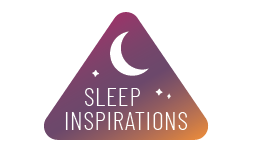Coronavirus, Obstructive Sleep Apnea and CPAP
Week four of our national shut down. Do you have your obstructive apnea under control? I hope this finds you healthy and sleeping well. What does having this virus around mean to you and others with obstructive sleep apnea?
Obstructive sleep apnea is a chronic condition. The coronavirus is a new infectious agent that produces a short-term illness. It is a respiratory infection and in many ways parallels influenza. It appears to be more contagious and may produces a more intense severe illness. None of us want to experience it.
Seasons and years come and go. Influenza comes and goes. The common cold is a frequent visitor to the lives of busy people. These things happen while people have the ongoing problem of obstructive sleep apnea. Now we can add coronavirus to the list.
Treatment Recommendations
Many aspects of our treatment recommendation are the same. The two most important are:
Continue to use your CPAP
Have a regular cleaning schedule for your equipment
A respiratory outbreak, certainly the current coronavirus episode, calls for some attention to treatment recommendations. While is it important to use the equipment, it is even more important to use your equipment during a widespread respiratory infections outbreak. Regular CPAP users have fewer respiratory illnesses during these community wide infectious episodes. While we do not have experience with the coronavirus, it seems likely that regular CPAP usage will help in a similar manner as it does with the usual respiratory illness. So by all means:
USE YOUR CPAP – All Night Every Night
Cleaning Recommendations
Special attention should be paid to cleaning your equipment. Sleep physicians are aware of the wide range of cleaning habits of our patients. Many of us do not follow the guidelines suggested by the manufactures. It might be time to reassess your cleaning pattern in the times of the coronavirus.
If you and yours are well and free of respiratory symptoms, cleaning your equipment should be on a fixed schedule. Mask, tubing and humidifier should be cleaned at least once a week. With a consideration of the nature of coronavirus, a dilute gentle soap solution would be the preferred cleaning agent. Soap is a superior agent for coronal virus disinfecting. If you haven’t been cleaning, start now.
KEEP YOUR EQUIPMENT CLEAN
What if you are diagnosed with, or suspected of having, the coronavirus?
Usage becomes even more important. When ill with respiratory symptoms, sleeping with your CPAP will speed up your recovery and lessen the severity of your illness. It is more important that ever that you use your CPAP during the illness.
Cleaning your equipment is more important. When you have the coronavirus infection it is best to clean your mask, tubing and humidifier daily. The machine and bedside table should be rubbed down with a disinfectant wipe. The pillowcase and sheets should be washed frequently if not daily. The room should be aired out daily, if possible, between sleeping hours.
